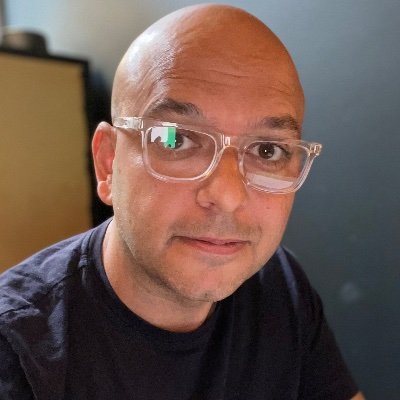Twelve years ago, Atlanta Magazine asked me to write some pithy advice to then-incoming ATL Mayor Kasim Reed. If I’d known then what I know now, I could’ve offered suggestions such as “never tweet,” or perhaps “send regular ‘don’t do crimes’ reminders to everyone in your office.”
Instead, I suggested Reed come out and say that the BeltLine would never be the transit project its inventor Ryan Gravel intended. Indeed, the one its civic boosters said it would be. That it was instead destined to be a great linear park, and nothing more.
Twelve years later, the only mass transit on the BeltLine is people violating the “one rider at a time” rule on rental scooters. I was right. But I also think I missed the point entirely.
I’d forgotten what I’d written back then until this newsletter’s proprietor asked me to share an idea that I thought would make Atlanta better. I have a bunch of them. One involves extremely specific, strategic distribution of egg and cheese biscuits. We’ll save that for another day.
Instead, let’s focus on a possibly better and definitely Whole 30-compliant idea: Atlanta needs to be bigger. A lot bigger. Specifically, Atlanta’s city limits should be redrawn to include the suburbs that are part of the city’s core.
We need to create Mega-Atlanta.
Atlanta is the ninth largest metropolitan area in the country. It’s the economic capital of the southeast and the largest creator and exporter of popular culture in the U.S. outside of Los Angeles and New York. We’re a business city, a music city, a television city, a food city, a college city, a science city, a tech city, and we gave the U.S. its actual modern Founding Father, Dr. Martin Luther King, Jr. I could go on about how much Atlanta has given and continues to give, but as it turns out, I was given a word count.
At the heart of this magical metro area sits a mid-sized city of just half a million people, with an operating budget roughly equal to a day-and-a-half of Walmart’s revenue. Greater Atlanta is a global supercity. The actual City of Atlanta is a Fresno. A Fresno with peanuts instead of raisins. We’re humid Tucson.
Unlike New York, Los Angeles, Chicago, or even Jacksonville, Atlanta’s city boundaries haven’t been allowed to expand to take in the people, buildings, neighborhoods, and (ahem) tax revenue its success and relatively enlightened leadership has attracted and nurtured.
Atlanta’s post-Civil Rights Movement boom coincided with white flight to the suburbs, and white resistance to sharing power and (ahem, again) tax dollars with non-white, non-conservative political entities. The people who left the city limits weren’t keen to redraw the lines in a way that would pull them back in.
Atlanta’s inner suburbs have evolved quite a bit since the white flight era. The five-county core of Fulton, DeKalb, Cobb, Gwinnett, and Clayton (and beyond, really) is home to a growing, profoundly diverse, increasingly prosperous 3.9 million people. Their cumulative votes in 2018 and 2020 suggest this urban and suburban core is tired of rural and exurban Republicans imposing their destructive, right-wing policy preferences on a diverse, increasingly progressive urban center.
Once he steers us past the ludicrous and quite obviously racist Buckhead secession grotesquery, Mayor Andre Dickens should propose that these five counties join forces like full-on municipal Voltron.
Mega-Atlanta.
Let’s fuse our local political patchwork into the nation’s third largest city. Mega-Atlanta will have the political cohesion to spend the next 50 years building a modern transportation system and affordable housing around it, adapting to survive the coming climate catastrophe, and maybe even building a public school system that stops shortchanging kids who are careless enough to not have high-earning parents.
Will the Brian Kemps of the state try to stop it? Of course. But Mega-Atlanta would be a lot harder to push around than the collection of stunted municipalities we’ve got now.
Is this a good idea? Maybe! I think my desired outcomes are pretty great as far as desired outcomes go, but concede that my path to getting there might be so far outside the current realm of possibility that it’s borderline fantasy. It’s certainly not nearly as well articulated as the BeltLine’s plans were in 2009, or the late MARTA CEO Jeffrey Parker’s $100 billion transit “moonshot” idea was.
But I think my idea has one thing in common with those. It’s an invitation to wish for a better future for Atlanta by loosening the past and present’s grip on our civic potential. Before we can demand it, we have to imagine it.
Can Atlanta mature beyond its car-centric, grossly unequal, environmentally unsustainable political map? I don’t know. Will the mayor of Atlanta ever be the mayor of more than 10% of the people who, when they’re on vacation and someone asks them where they live, reply Atlanta? I don’t know. Will I ever be able to take a BeltLine train from Ormewood Park to Bellwood Quarry, with a stop at Trader Joe’s to pick up some Ghost Pepper Potato Chips? (They’re not actually as spicy as you’d think.) You guessed it: I don’t know.
But if any of this happens it’ll be because real visionaries (not me) pointed the way and regular people (me) stopped letting our annoyance about the way things are block our view of what could be. That’s how you get Mega-Atlanta.

Andisheh Nouraee
Andisheh Nouraee is an author, communications strategist, and former journalist who has called Mega-Atlanta home since 1997.
